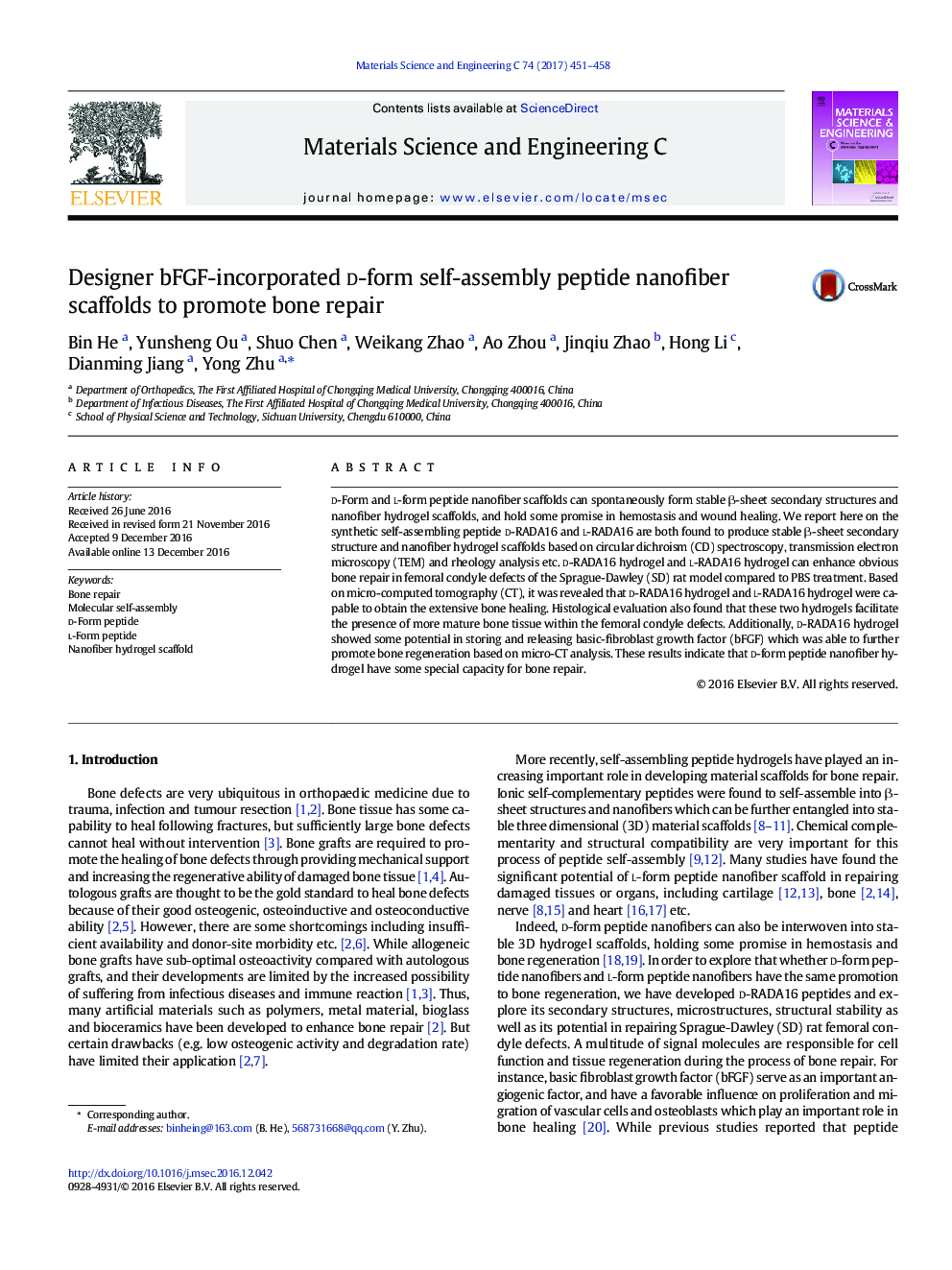| Article ID | Journal | Published Year | Pages | File Type |
|---|---|---|---|---|
| 5435046 | Materials Science and Engineering: C | 2017 | 8 Pages |
â¢Peptide d-RADA16 and l-RADA16 can form stable hydrogels.â¢d-RADA16 hydrogel can obtain the comparable and extensive promotion to bone healing compared to l-RADA16 hydrogel.â¢l-RADA16 hydrogel allows for slow release of bFGF.
d-Form and l-form peptide nanofiber scaffolds can spontaneously form stable β-sheet secondary structures and nanofiber hydrogel scaffolds, and hold some promise in hemostasis and wound healing. We report here on the synthetic self-assembling peptide d-RADA16 and l-RADA16 are both found to produce stable β-sheet secondary structure and nanofiber hydrogel scaffolds based on circular dichroism (CD) spectroscopy, transmission electron microscopy (TEM) and rheology analysis etc. d-RADA16 hydrogel and l-RADA16 hydrogel can enhance obvious bone repair in femoral condyle defects of the Sprague-Dawley (SD) rat model compared to PBS treatment. Based on micro-computed tomography (CT), it was revealed that d-RADA16 hydrogel and l-RADA16 hydrogel were capable to obtain the extensive bone healing. Histological evaluation also found that these two hydrogels facilitate the presence of more mature bone tissue within the femoral condyle defects. Additionally, d-RADA16 hydrogel showed some potential in storing and releasing basic-fibroblast growth factor (bFGF) which was able to further promote bone regeneration based on micro-CT analysis. These results indicate that d-form peptide nanofiber hydrogel have some special capacity for bone repair.
